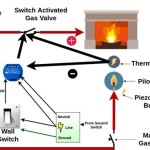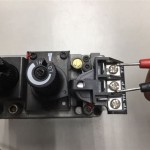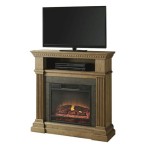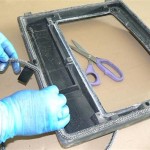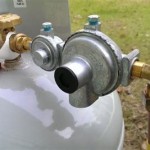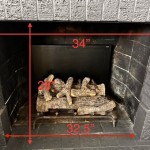Installing a Wood Burning Stove in an Existing Fireplace: A Comprehensive Guide
Installing a wood burning stove into an existing fireplace can be a rewarding project, providing efficient heating and an attractive focal point for a home. However, it is essential to approach the installation with careful planning, a thorough understanding of building codes and safety regulations, and adherence to manufacturer specifications. This article provides a detailed overview of the process, covering crucial aspects from assessing the suitability of the existing fireplace to the final inspection.
Before embarking on this project, it is paramount to understand that improper installation can lead to hazardous conditions, including carbon monoxide poisoning and house fires. Therefore, it is strongly recommended to consult with qualified professionals, such as certified chimney sweeps and stove installers, particularly if you lack extensive experience in similar projects. Professional guidance will ensure compliance with local codes and safe operation of the wood burning stove.
The entire process can be broken down into several key stages: assessment and planning, preparation, installation, and inspection. Each stage requires meticulous attention to detail to achieve a successful and safe outcome.
Assessing the Existing Fireplace
The first step is a comprehensive evaluation of the existing fireplace and chimney. This assessment determines whether the existing structure is suitable for safely housing and venting a wood burning stove. Critical factors to consider include the condition of the chimney, the size of the firebox, and the presence of any structural issues.
The chimney’s integrity is of utmost importance. A thorough inspection, preferably conducted by a certified chimney sweep, should identify any cracks, deterioration of the flue lining, or obstructions. A damaged or deteriorated chimney poses a significant fire hazard. The chimney must be structurally sound and capable of withstanding the higher temperatures and more concentrated exhaust produced by a wood burning stove compared to a traditional open fireplace. Often, the existing chimney needs to be lined with a stainless-steel liner specifically designed for wood stoves to ensure it conforms to modern safety standards.
The size of the firebox is another crucial consideration. The wood burning stove must physically fit within the existing firebox opening, allowing for adequate clearance around the stove body. Manufacturer specifications will dictate the minimum clearances required to combustible materials, such as walls, mantels, and flooring. Insufficient clearance can lead to overheating and potentially ignite nearby materials. The fireplace opening may need to be modified to accommodate the stove and ensure proper clearances.
Look for any signs of structural problems in the fireplace and surrounding masonry. Cracks, loose bricks, or a leaning chimney can indicate underlying issues that need to be addressed before installing the stove. Ignoring these problems can compromise the safety and stability of the entire system. Any necessary repairs to the fireplace structure must be completed before proceeding with the installation.
If the existing fireplace has a damper, it will likely need to be either removed or permanently sealed in the open position. A closed damper can obstruct the flow of exhaust gases, leading to dangerous carbon monoxide buildup inside the home. Sealing the damper in the open position prevents accidental closure and ensures a clear path for the stove's exhaust.
Finally, consider the aesthetics of the final installation. Choose a wood burning stove that complements the existing fireplace design and the overall style of the room. There are various stove designs and finishes available to suit different tastes. Factors such as the stove's colour, shape, and presence of decorative elements should be taken into account.
Preparing for the Installation
Once the assessment is complete and you’ve determined that the existing fireplace is suitable for conversion, preparation is key. This stage involves obtaining necessary permits, gathering the required materials and tools, and preparing the fireplace for the stove installation.
Obtaining the appropriate permits is a critical step that should not be overlooked. Building codes vary by locality, and installing a wood burning stove typically requires a permit from the local building department. The permit ensures that the installation meets safety standards and complies with all applicable regulations. Contact the local building department to inquire about specific permit requirements and procedures. Failing to obtain the necessary permits can result in fines, delays, and even the removal of the stove.
Gather all the necessary materials and tools before starting the installation. This includes the wood burning stove itself, a stainless-steel chimney liner (if required), stove pipe, insulation materials, fire-resistant hearth extension (if needed), sealing materials, and various hand and power tools. Having all the required materials on hand will streamline the installation process and prevent delays. Consult the stove manufacturer's installation instructions for a complete list of recommended materials and tools.
Prepare the fireplace by thoroughly cleaning it and removing any debris, soot, or ashes. This will provide a clean surface for the stove installation and improve the overall efficiency of the system. Use a shop vacuum to remove loose particles and a wire brush to scrub away stubborn soot deposits. Ensure that the fireplace is completely dry before proceeding.
If a hearth extension is required, install it according to manufacturer specifications. A hearth extension is a non-combustible surface that extends in front of the fireplace opening to protect the floor from sparks and embers. The size and material of the hearth extension are typically dictated by local building codes and the stove manufacturer's requirements. Ensure that the hearth extension is properly installed and securely attached to the floor.
Prepare the chimney for the installation of the stainless-steel liner, if required. This may involve removing the existing flue liner or cleaning the chimney to ensure a smooth surface for the new liner. Follow the chimney liner manufacturer's instructions for proper installation. A properly installed chimney liner is crucial for the safe and efficient venting of the wood burning stove.
Installing the Wood Burning Stove
The installation phase is where meticulous adherence to manufacturer instructions and safety protocols is paramount. This process generally involves installing the chimney liner, connecting the stove to the liner, and ensuring proper clearances and sealing.
The first step is usually the installation of the stainless-steel chimney liner. Carefully lower the liner down the chimney, ensuring it is properly centered and aligned. Connect the liner to the stove adapter, which connects the liner to the stove's flue collar. Secure the connections with appropriate fasteners and sealing materials, as recommended by the manufacturer. The chimney liner should extend above the top of the chimney and be capped with a spark arrestor to prevent embers from escaping.
Position the wood burning stove inside the fireplace opening, ensuring that it is centered and aligned with the chimney liner. Adjust the stove's position to achieve the required clearances from combustible materials. Use shims, if necessary, to level the stove and ensure it sits securely on the hearth.
Connect the stove to the chimney liner using stove pipe. The stove pipe should be of the correct diameter and length, as specified by the stove manufacturer. Secure the stove pipe sections with appropriate fasteners and seal the joints with high-temperature sealant. The stove pipe should be installed with a slight upward slope towards the chimney to facilitate the flow of exhaust gases. Ensure that the stove pipe does not come into contact with any combustible materials. Air gaps are crucial for safe operation.
Seal any gaps between the stove and the fireplace opening with fire-resistant materials. This will prevent air leaks and ensure that all combustion gases are vented through the chimney. Use high-temperature mortar or other approved sealing compounds to fill any gaps. Pay particular attention to sealing the area around the stove pipe connection to the chimney liner.
Install any required heat shields or other protective measures to reduce the risk of overheating. Heat shields can be attached to walls or other combustible surfaces to reduce the amount of radiant heat exposure. Follow the stove manufacturer's instructions for proper heat shield installation.
Final Inspection and Testing
Following the installation, a thorough inspection is essential to ensure the stove is operating safely and efficiently. This inspection should be conducted by a qualified professional, such as a certified chimney sweep or stove installer. The inspection will verify compliance with building codes and identify any potential hazards.
The inspector will verify that the chimney liner is properly installed and connected to the stove. They will also check for any leaks in the stove pipe connections and ensure that all clearances to combustible materials are met. The inspector will examine the overall condition of the fireplace and chimney to ensure they are structurally sound.
A smoke test may be performed to verify that the chimney is drafting properly and that there are no leaks in the system. The test involves lighting a small fire inside the stove and observing the smoke to ensure it is drawn up the chimney without any backdrafting into the room. If any backdrafting is observed, it indicates a problem with the chimney or stove installation that needs to be addressed.
The inspector will also check the carbon monoxide detectors in the home to ensure they are functioning correctly. Carbon monoxide is a colorless, odorless gas that can be produced by a malfunctioning wood burning stove. Working carbon monoxide detectors are essential for protecting the occupants of the home from carbon monoxide poisoning.
Once the inspection is complete and any necessary corrections have been made, the installation can be considered final. The inspector will typically provide a written report documenting the inspection results and any recommendations for future maintenance or repairs.
After the inspection, it is crucial to familiarize yourself with the safe operation of the wood burning stove. Read the manufacturer's instructions carefully and understand how to properly load and operate the stove. Only burn seasoned firewood, as green or wet wood can produce excessive smoke and creosote buildup in the chimney.
Regular maintenance is essential for ensuring the long-term safe and efficient operation of the wood burning stove. Schedule regular chimney sweeps to remove creosote buildup and inspect the chimney liner for any damage. Inspect the stove pipe regularly for leaks or corrosion. Follow the manufacturer's recommendations for maintaining the stove and its components.
By following these guidelines and seeking professional advice, you can safely and successfully install a wood burning stove into an existing fireplace, providing warmth and ambiance to your home for years to come. Remember, safety should always be the top priority throughout the entire process.

Converting A Fireplace To Wood Burning Stove Chesneys

Converting A Fireplace To Wood Burning Stove Chesneys

Can You Install A Wood Stove In Fireplace Direct Stoves

Add A Wood Stove To An Existing Fireplace Flue Doityourself Com

How To Prepare A Chimney For Wood Burning Stove Houzz Ie

Victorian Fireplace Hobbit Installation Small Stoves

How To Install A Wood Burning Fireplace Insert Fireplaces Direct Learning Center

Chimney Installations

Can You Install A Wood Burning Stove

Mobile Home Fireplaces Clayton Studio
Related Posts

